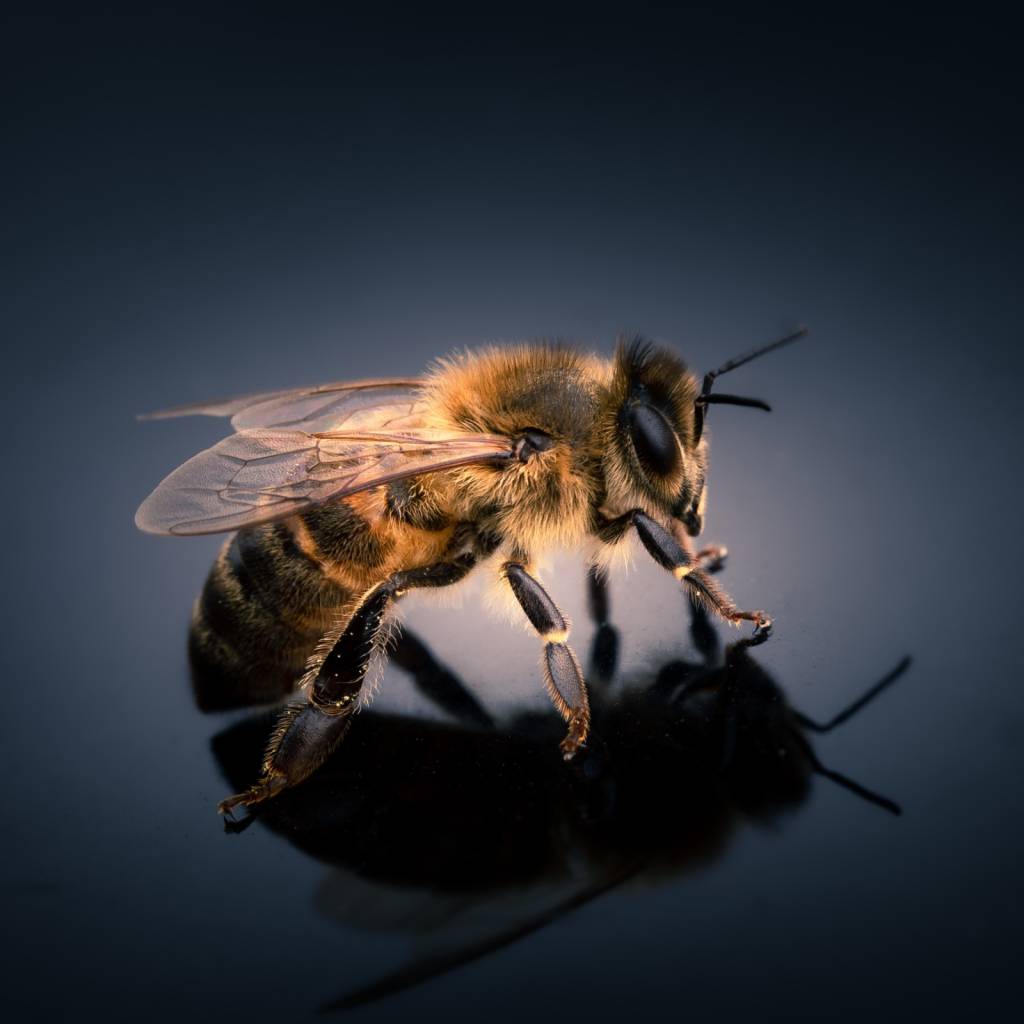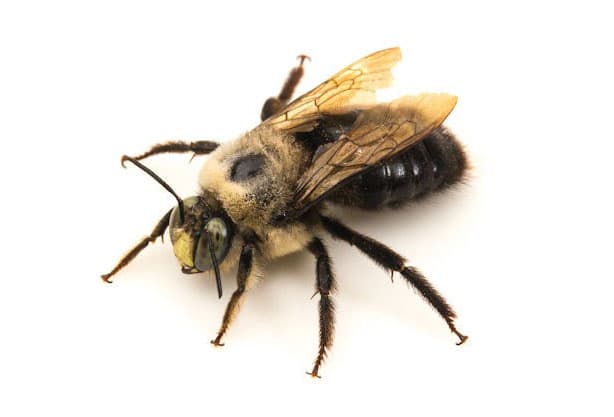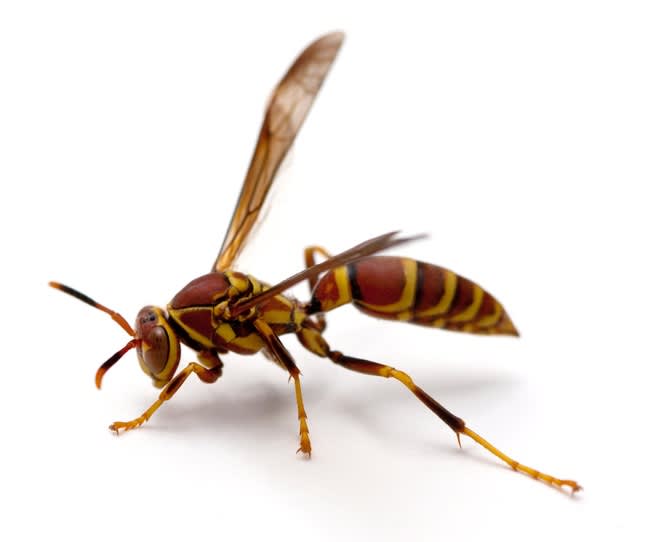One of the larger bee species that can be found in North America, the Carpenter bee is also one of the more interesting. Carpenter bees can be found all over the United States, but their populations concentrate in the south from Arizona to Florida, and along the east coast corridor all the way north to New York.
Although they are often confused for bumblebees because of their size and appearance, fuzzy and about an inch long. These two species differ in many ways as well as share numerous characteristics. One of the easiest ways to differentiate the two is by looking closely at its abdomen. Bumble bees will be fuzzy all over while carpenter bees will have a shiny, sometimes metallic abdominal area.
Because they have no hive or queen to defend, Carpenter Bees themselves are typically not a danger to humans in terms of aggression. Another similarity between bumble bees and carpenter bees is that only female carpenter bees are able to sting, and unlike honey bees, both are able to sting you multiple times. Female Carpenter bees will only sting you if they feel threatened, which can include being in close proximity to its nest. While the males are unable to sting, they can still be very territorial. Male bees will charge at you and buzz around you menacingly, and although they lack the ability to sting it can still be harrowing ordeal.
Carpenter bees are what is known as a solitary bee species. There is no hierarchy of queens and workers, only male and female carpenter bees. They do not live in colonies or hives, only foraging food for themselves and their offspring. Young bees will stay with the mother until they are old enough to forage for themselves. Carpenter bees, like most bees, are very desirable pollinators. The agitation from the rapid movement of their wings causes what is known as “Buzz” pollination. Like Bumblebees, carpenter bees make great pollinators for plants that require this specific type of plant which includes tomatoes and some varieties of eggplant. Think about what Italian food would be like without these hard working little insects!
True to its name, the carpenter bee crafts its home with wood, or rather out of wood. The diagram to the right shows how the carpenter bee crafts its simple, yet uniform width tunnels which can branch out froma single entrance. Contrary to what you might think, carpenter bees do not eat wood. They will grab onto pieces and vibrate vigorously to dislodge it, then remove it from the nest. Carpenter bee holes will often have some of this “sawdust” below the opening, and because the holes they make are so uniform and perfectly round, it can be easy to mistake their nests for holes caused by a drill bit.True to its name, the carpenter bee crafts its home with wood, or rather out of wood. The diagram to the right shows how the carpenter bee crafts its simple, yet uniform width tunnels which can branch out froma single entrance. Contrary to what you might think, carpenter bees do not eat wood. They will grab onto pieces and vibrate vigorously to dislodge it, then remove it from the nest. Carpenter bee holes will often have some of this “sawdust” below the opening, and because the holes they make are so uniform and perfectly round, it can be easy to mistake their nests for holes caused by a drill bit.
When nesting, the female bee seeks out soft pieces of wood to lay her eggs. Once they start nesting in deadwood or other plant-based material, they expand pretty fast. The carpenter bee life cycle lasts one year. In the late spring and early summer months the males and females will come out of their dormant winter stage to mate, with the mated males dying off soon after. The females will then lay eggs that eventually hatch in the late summer months. These newborn carpenter bees will spend the last months of warm weather foraging for nectar before going into a hibernative state for the cold winter months, all to start the process over again in the spring.
While Carpenter bees may not wreak as much destruction on man made wooden structures as say, termites, they can still cause significant structural problems and cost you thousands of dollars in the long run. Our expert bee technicians are highly skilled at locating carpenter bee nests. There are many places they like to hide that you may never have thought of, so it’s best to let our beekeepers assess the property and safely remove as many of the bees as possible. This allows the bees to continue to do their important pollination job, while you get back to your summer tasks like enjoying the great outdoors.









